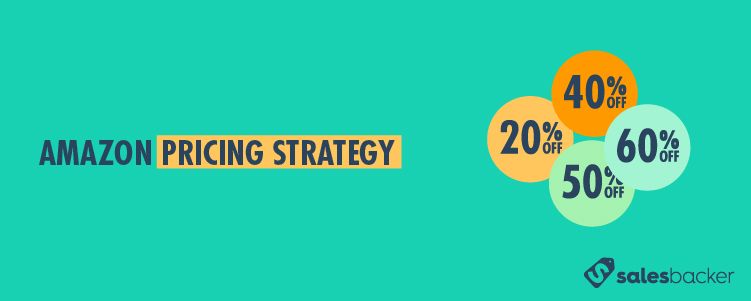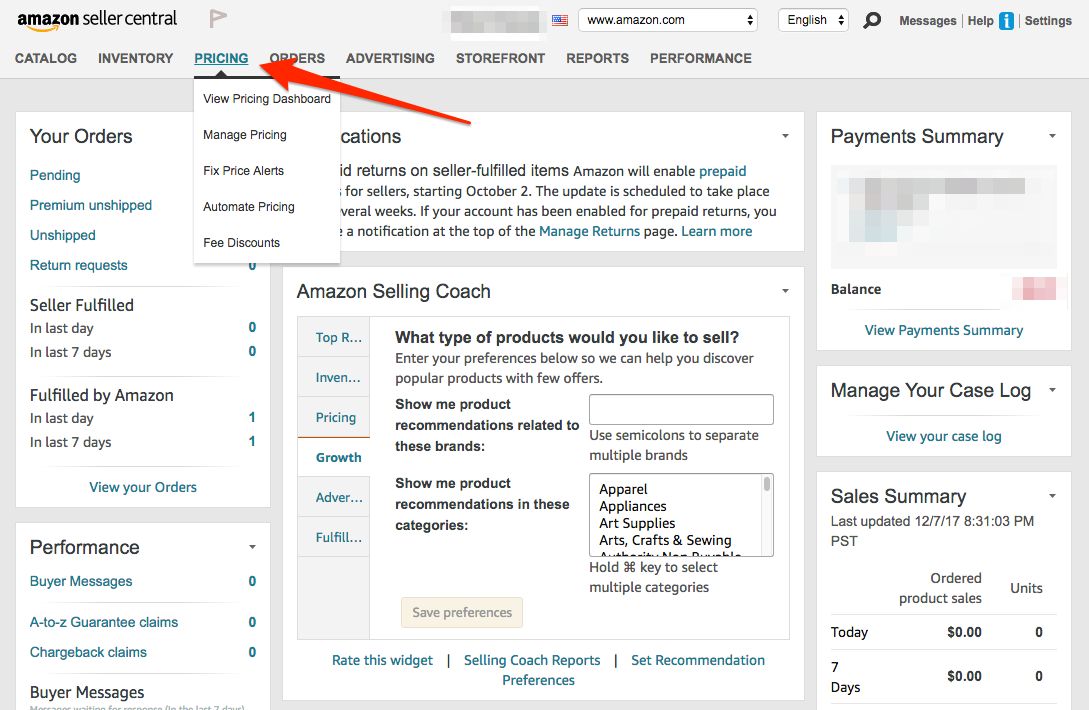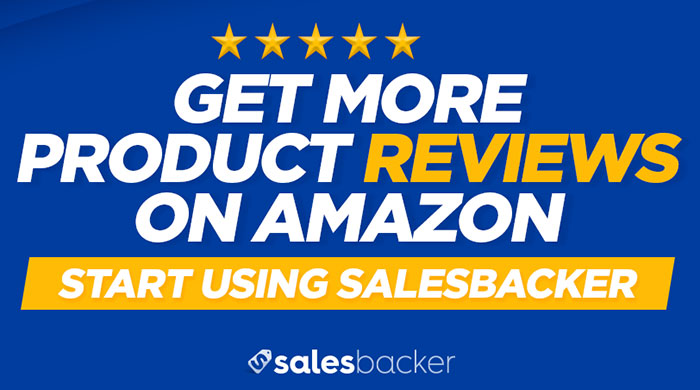
Why Pricing Matters
When you launch a product on Amazon, you likely spend a lot of time considering every aspect of your product. How big is it? What color is it? What features does it have? What will the packaging look like? All of these things certainly play into how successful a product is in the Amazon marketplace. But one important element of your product should get a good amount of attention from you, both in the early stages of product research as well as throughout the life of your product — the price. How much or how little you charge for what you sell is a crucially important part of your product for two main reasons:
Reason #1: Price Impacts Profit Margin
If you price your product too low, your business won’t be profitable or you could even end up losing money on each unit you sell.
Reason #2: Price Impacts Sales Volume
If you price your product too high, you’ll scare off customers and you won’t get as many sales as you might otherwise.
These two factors work together in an intricate and precarious way; you want your price to be high enough that you are making maximum profit, while low enough that you aren’t losing sales to your competitors.
Reason #3: Amazon Storage Fees
If you price your product too high and it doesn’t sell well, that means it is sitting on Amazon’s warehouse shelves. Amazon charges you a storage fee every month, as well as a long-term storage fee twice a year. These storage fees can quickly eat into your profits if you aren’t careful.
So, as you see, price is a crucial factor to get right. And this isn’t a one time exercise, but something that requires regularly monitoring the market and your competitors and adjusting your price as necessary in order to remain competitive.
Pricing Strategies Based on Business Model
When you consider pricing strategies and look to various sources for advice on the subject, it is super important to be sure you are applying pricing strategies that make sense and account for your particular situation. In particular, it is important to be intentional about the pricing strategies you use based on the business model you are using. There are different strategies and implications when pricing private label products versus pricing products under a wholesale or retail arbitrage model.
Pricing Strategies for Wholesale or Retail Arbitrage
When you sell a product via a wholesale or retail arbitrage model you aren’t just competing with similar products, but you are competing with other sellers for the Buy Box. Pricing is one of the biggest things that Amazon looks at when determining who wins the Buy Box for a product, and to be successful your pricing needs to be competitive. Be sure you are utilizing the different resources within Seller Central to keep an eye on your competition and to identify opportunities for more competitive pricing. You can find helpful resources under the Pricing tab in Seller Central such as the Pricing Dashboard and the Manage Pricing page.

You can also find specific pricing suggestions in Seller Central under the Reports tab by clicking on Amazon Selling Coach and choosing the Pricing option under your list of reports.

Another note on pricing when using a wholesale or retail arbitrage model — be careful about being the absolute lowest priced seller for any of the products you sell. While you do want to offer competitive pricing, you don’t want to initiate a pricing war in your efforts to win the Buy Box, as this will only lead to a race to the bottom on price and will create a scenario where your profit margins take a major hit.
Pricing Strategies for Private Label Products
When you sell a private label product, the good news is that you don’t have to compete with other sellers to win the Buy Box, because you are the only seller offering your exact product. The challenge, however, is to price your products competitively compared to other similar products being sold on the market. With a private label, price impacts not only your sales volumes and profit margins, but it also affects the reputation of your brand. If your products are priced lower than all other competitors, customers might see your products as “cheap” or potentially lower quality than the competition. But if your products are priced higher than the competition for no clear reason, then customers will likely go with more affordable options over your product.
Your goal as a private label brand owner should always be to provide a price and product that represents value. If your product brings a feature or benefit to the table that the competition doesn’t offer, then customers will be willing to spend a bit more money on your product since they feel like they are getting something in exchange. A higher price along with added features and benefits sends a message to customers that your product is high-quality, and quality is something that people are willing to pay for. If your product is too similar to the products offered by your competition, you’ll need to rely too much on lower pricing in order to drive sales, which will eat into your profit margins. Ultra-low prices can also create pricing wars with your competition, as well as driving down the perceived value of your product and your brand.
Depending on the product you sell, you need to consider what type of features will cause customers to choose your product over the competition. Is your target customer mainly concerned with how your product looks, or are they purely looking for something that works well? Is there a common complaint or problem that you notice in the product reviews for your competition that you can solve in the design of your product? The more you can offer the right tangible benefits that truly solve a customer’s needs, the easier time you’ll have justifying a higher price… and the more likely customers will be willing to pay it.
Along with the design and price of your product, you need to be sure that your product listing — the product images, the product description, AND the product reviews — all clearly demonstrate the added value that customers will get should they purchase your product over the competition. This means your product images need to be top quality and your product description sales copy needs to be sharp and clear. Consider hiring professionals to help you if necessary — while you’ll have to make an upfront investment, odds are it will pay for itself quickly.
High-Quality Products Speak for Themselves… But Make Sure Potential Customers Get the Message
Product reviews are a crucial element to a product listing that successfully demonstrates the quality and value of a product. If your product truly is top quality, then odds are you have lots of happy customers. But it is generally known that people are more likely to go out of their way to leave a review for a product or service that is terrible than they are to dedicate time to sharing a positive experience. Your goal as a seller should be to make it as easy as possible on your customers to give you feedback. By using a service such as Salesbacker, you can automatically email each customer who purchases your product to ask them to leave you a product review, and even provide them with quicklinks to take them directly to where they can write up their review. The easier it is for customers to leave a review, the more likely they will do it. So if you aren’t yet using Salesbacker, be sure to sign up for your free 30-day trial today.
Tips for Managing Repricing
If you are a seller competing for the Buy Box or selling a product in a particularly competitive environment, you’ll want to develop a strategy for regularly assessing the prices of your competition and adjusting your price accordingly. This practice is commonly referred to as repricing.
You have a couple of options for how to go about managing repricing from a practical standpoint.
Option #1: Manual Repricing
The first option is to manually reprice, which requires you to regularly, manually, check the pricing of your competition and adjust your own price accordingly. This approach works best for sellers who have just a few products and who also have the time to regularly do the manual checking and any required adjustments.
Option #2: Repricing Software
Another approach is to use a repricing software. There are many repricing software tools available, but this type of software monitors the prices of your competition and automatically adjusts your sale price accordingly, based on any guidance you provide in the form of minimums and maximums, or other rules or limits. Repricing software is most beneficial for sellers with many products since it doesn’t require the investment of time that comes with manual repricing.
Option #3: Automate Pricing in Seller Central
A third option is to utilize the Automate Pricing tool in Seller Central. Similar to repricing software, this feature allows you to set rules and limits that Amazon then uses to automatically change your pricing as needed. This tool obviously only looks at prices on Amazon (versus repricing tools that may take other retailers into consideration), but for many Amazon sellers this feature will meet all of your needs.

Click here to learn more (Seller Central login required).
Conclusion
It is worth investing some time and thought into your pricing strategy. Don’t leave money on the table or devalue your product by pricing too low, and don’t price your product so high that you are losing sales needlessly. While high sales volumes and high profit margins are great, what is even better is when the two work together to make you the most possible MONEY.






